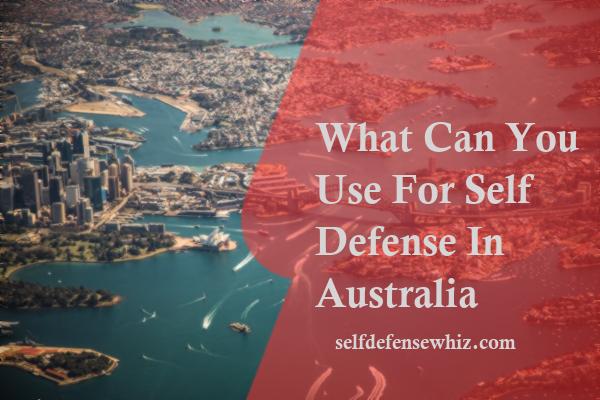Can You Kill An Endangered Animal In Self Defense
Can you kill an endangered animal in self defense? This question sparks intense debate and raises ethical concerns. In a world where conservation efforts strive to protect endangered species from extinction, the need to understand our actions and the boundaries of self-defense becomes crucial. While the short answer may seem straightforward, there are numerous factors to consider before drawing any definitive conclusions. So, let’s delve into this complex issue and explore the ethical, legal, and practical aspects surrounding the question of whether one can **kill an endangered animal in self-defense**.
Can You Kill An Endangered Animal In Self Defense
The question of whether it is permissible to kill an endangered animal in self-defense raises complex moral and legal considerations. In general, self-defense is considered a justifiable reason for killing another living being, but when it comes to endangered species, the situation becomes more intricate. The primary concern for endangered animals is their conservation and protection, and killing them, even under self-defense circumstances, can have serious ecological consequences.
However, situations may arise where individuals may need to protect themselves from imminent danger posed by an endangered animal. For example, if a person is being attacked by a critically endangered tiger or is at risk of being severely injured or killed, killing the animal may be seen as the only means of self-preservation. In such cases, courts may consider the individual’s actions justifiable in light of the immediate threat to their life.
Nevertheless, it is crucial to acknowledge that any decision to kill an endangered animal in self-defense should be approached with extreme caution. Encouraging alternative measures like non-lethal deterrence methods, such as tranquilizers or repellents, is essential. Conservation organizations and governments should also focus on education and awareness programs, teaching people how to safely coexist with endangered species to minimize the need for lethal force.
Pro-tips:
- Always prioritize the conservation and protection of endangered species in any situation.
- Seek guidance from local authorities or wildlife experts on handling potentially dangerous encounters.
- Support and promote non-lethal methods for self-defense and deterrence.
- Stay informed about the laws and regulations regarding self-defense and endangered species in your area.
Disclaimer: The information provided above is not legal advice. Wildlife protection laws and regulations may vary in different regions, and it is crucial to consult local authorities or legal professionals for accurate guidance.
Is It Legally Permissible To Kill An Endangered Animal In Self-Defense?
The question of whether it is justifiable to kill an endangered animal in self-defense is a complex and controversial one. On one hand, the instinct to protect oneself from harm is deeply ingrained in human nature, and the concept of self-defense is widely accepted as a legitimate justification for taking another creature’s life. However, when it comes to endangered species, the situation becomes more intricate.
Endangered animals are those on the brink of extinction, often as a result of human activities such as habitat destruction and poaching. Killing an endangered animal, even in self-defense, not only adds to the already fragile population but also perpetuates the threat they face from human interference. Additionally, many endangered species play vital roles in ecosystems, and their loss can have far-reaching ecological consequences.
While the instinct to prioritize human safety is understandable, it is essential to explore alternative measures in situations involving endangered animals. One such approach is developing non-lethal methods to deter and avoid conflicts with these creatures. Education and awareness campaigns can also help people understand how to minimize risks and peacefully coexist with endangered species in their habitats. With these efforts, the need to resort to lethal self-defense against endangered animals can hopefully be reduced, safeguarding both human lives and the survival of these precious species.
What Are The Ethical Considerations Of Killing An Endangered Animal In Self-Defense?
In the discussion of whether it is justifiable to kill an endangered animal in self-defense, several factors need to be taken into consideration. Firstly, self-defense typically refers to a situation in which an individual’s life is at risk. If an endangered animal poses an immediate threat to one’s life, it may be argued that lethal force is necessary to protect oneself. However, it is crucial to assess alternative actions that can be taken before resorting to killing the animal.
One must consider if there are non-lethal methods available to deter or mitigate the threat posed by the endangered animal. For instance, using deterrent devices, such as loud noises or non-lethal ammunition, might scare away the animal without causing harm. Additionally, seeking immediate assistance from authorities or wildlife experts could be crucial in finding a solution that ensures both human safety and the preservation of the endangered species.
Moreover, it is important to recognize the legal implications of killing an endangered animal. Many countries have strict laws that protect endangered species and prohibit any harm inflicted upon them. Therefore, even in situations of self-defense, one may face legal consequences for killing such an animal. This highlights the importance of raising awareness about the presence and behavior of endangered species in certain areas, as prevention and education can often mitigate the need for lethal actions in self-defense situations.
How Can One Effectively Protect Oneself Without Resorting To Killing An Endangered Animal?
There are situations where an individual may find themselves faced with an endangered animal and feel compelled to take defensive action to protect themselves. While it is a distressing scenario, the issue of killing an endangered animal in self-defense raises complex ethical and legal considerations. In such cases, the protection of human life must be prioritized, but it is necessary to also consider the impact on the conservation efforts and the rationale for the threat.
The first aspect to consider is the legal framework surrounding the protection of endangered species. In many countries, the killing of an endangered animal, even in self-defense, is strictly prohibited by law. The intention behind these legal protections is to ensure the survival of these species and prevent further harm to their populations. Therefore, individuals involved in such encounters may face severe legal consequences depending on the jurisdiction they find themselves in.
However, exceptions can be made when it comes to imminent threats to human life. In situations where an endangered animal poses a direct and immediate danger to a person’s safety, the principle of self-defense can come into play. This exception is rooted in the understanding that human lives should be prioritized and protected. Nevertheless, the criteria for determining if a threat is genuine and unavoidable must be thoroughly evaluated to prevent misuse or exploitation. Additionally, any killing must be proportionate and only as a last resort when no other means of defense can be employed.
What Are The Legal Consequences For Killing An Endangered Animal In Self-Defense?
In the context of self-defense, the question arises as to whether it is legally justifiable to kill an endangered animal in order to protect one’s own life or the lives of others. Though the subject of self-defense is a universally recognized right, it becomes more complex when considering the status of the animal being attacked. Endangered animals are protected under international and national laws, which strive to conserve and restore their populations. These laws, such as the Endangered Species Act in the United States, aim to prevent their harm or eradication.
One possible argument in favor of killing an endangered animal in self-defense is based on the principle of necessity. According to this principle, one may be justified in using deadly force when there is an imminent threat to their life and there are no reasonable alternatives available to protect themselves. In situations where an endangered animal poses an immediate danger and there are no non-lethal methods of defense, it could be argued that killing the animal is a last resort and deemed necessary for survival.
However, opponents may argue that other alternatives should always be explored before resorting to lethal force. These alternatives could include retreating from the situation, using non-lethal deterrents such as bear spray or noise devices, or seeking assistance from authorities or wildlife experts. Additionally, one could argue that the principles of self-defense should not supersede the importance of protecting endangered species, as the value of preserving biodiversity and conserving these animals for future generations outweighs the immediate threat faced.
Is There A Difference In Self-Defense Laws When It Comes To Endangered Animals?
Discussing whether it is permissible to kill an endangered animal in self-defense raises important ethical considerations that must be carefully examined. While self-defense is universally recognized as a legitimate justification for taking necessary actions to protect one’s own life, the application of this principle to endangered animals necessitates critical examination. One key factor to consider is whether the threat posed by the animal is imminent and life-threatening. If a person finds themselves in an immediate and unavoidable situation of mortal danger due to an endangered animal, it may be argued that killing the animal becomes a necessary and justifiable act of self-preservation.
However, it is important to note that self-defense should always be proportionate to the threat posed. Therefore, alternatives such as non-lethal methods should be explored and employed first, if feasible, to avoid taking the life of an endangered species. The burden rests on the individual to demonstrate that all reasonable steps were taken to avoid killing the animal, thereby showing a genuine attempt at preserving life while ensuring personal safety.
Furthermore, the killing of an endangered animal in self-defense should be a last resort, rather than the default action. Strict legal regulations, international treaties, and conservation efforts are in place to safeguard endangered species, recognizing their ecological importance and human responsibility to protect them. Sustaining the survival of these animals is crucial, even in the face of potentially dangerous encounters. Therefore, comprehensive education and awareness programs should be developed to equip individuals with knowledge on how to best prevent such scenarios, promote coexistence, and minimize harm to both humans and endangered animals.
Conclusion
In conclusion, the question of whether one can kill an endangered animal in self-defense is indeed a complex issue that requires careful consideration. While it is undeniable that all beings have the inherent right to self-preservation, the concept of self-defense must align with a balanced approach to conservation efforts and environmental ethics. It is crucial to remember that the extinction of endangered animals not only disrupts biodiversity but also affects the delicate ecological balance, potentially leading to far-reaching consequences. It thus becomes our responsibility to explore alternative methods of protective measures, such as non-lethal deterrents or the involvement of conservation authorities, to safeguard both human lives and endangered species. By prioritizing coexistence and cooperation, we can strive towards a future where self-defense does not involve the tragic loss of invaluable wildlife.







